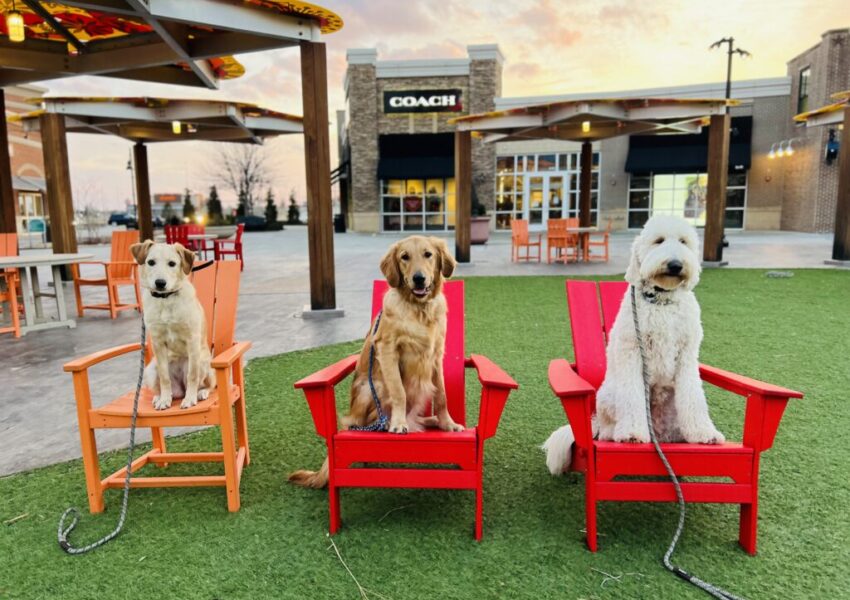Inside trim
To almost all of us, dog coats are somewhat of a mystery-sometimes a very matted and messy mystery. Whether they’re long and fluffy, short and coarse, or single- or double-coated, there’s a proper way to groom dogs’ coats to keep them looking their best.
AT-HOME GROOMING ESSENTIALS
Proper grooming is very a essential part of your dog’s health and well-being, and helping clients take the best care of their dogs is always Corinne’s #1 goal. We asked her what pet owners can do at home, in between professional grooming, to keep their dogs’ coats up to snuff.
The tools You will discover three basic tools for maintaining a freshly groomed coat: a comb, a brush, and a rubber brush.
For long coats, a half wide-tooth, half fine-tooth comb should be most of your tool. Use with a slicker or dematting brush to help keep your long-coated dog fluffy and knot free.
For short coats, a rubber brush will be your primary tool. Utilize it with a deshedding tool to eliminate under coat, and finish off with a comb for a wonderfully smooth and shiny result.
The brushing Select a pattern and abide by it over your dog. Try starting on the right hip and work right down to the foot. Then proceed to the neck and work over the back and down the side. Then brush leading right leg, under chin, chest, and start the pattern over on the left side. Save the tail and head for last.
Lift the hair and work small sections at a time, making sure to access the root of the hair directly at your skin. Corinne told us this about brushing to the main, “Far too often, clients tell me they brushed their dog, and are surprised by having to select from dematting charges or shaving their pet because they did not comb through to the root.”
Corrine shows that if you want to bathe your dog at home, try combing the knots out as the hair is wet. It is better to see the size and located area of the mats. When towel drying, pat, don’t rub, the coat dry. Rubbing aids in the formation of mats. If you dry your pet with knots left in, they’ll tighten, forming more mats. If mats are left unattended, they cause discomfort, irritation, and can be very dangerous to eliminate.
Nail trimming Essentially the most disheartening duty of pet grooming is nail trimming. Corrine uses a motor-operated grinder, that allows her to work the nail down slowly. The dog’s reaction tells her when she’s close to the quick. For those of us aware of outdated clippers, it can be hard to measure the right spot to clip, and when you clip too close, you cut into the quick which bleeds and causes your very best buddy pain.
It’s most usual to work with styptic powder over a pet’s bleeding nail. Corinne also reports that, “Cornstarch or flour helps stops bleeding nails unless you have a styptic powder or gel. To staunch the bleeding, hold the powder to the nail and apply pressure. Monitor those nails, though-the bleeding may resume if the nail scratches a rough surface.”
IN THE GROOMER’S
There are a few things that you can tell your groomer to make the grooming visit the greatest experience for any:
Does your dog have any medical ailments, food allergies, ever endured a seizure, or need medication?
Have you have you been informed of bad behavior at a previous groomer?
Does your pet have sensitive feet? Hates getting wet? Freaks out with the dryer?
This helps your groomer give your pet the special attention he needs or make necessary accommodations for your visit. Also, make sure your groomer has your present contact information, to allow them to speak to you in case there is a crisis. Happy grooming!



